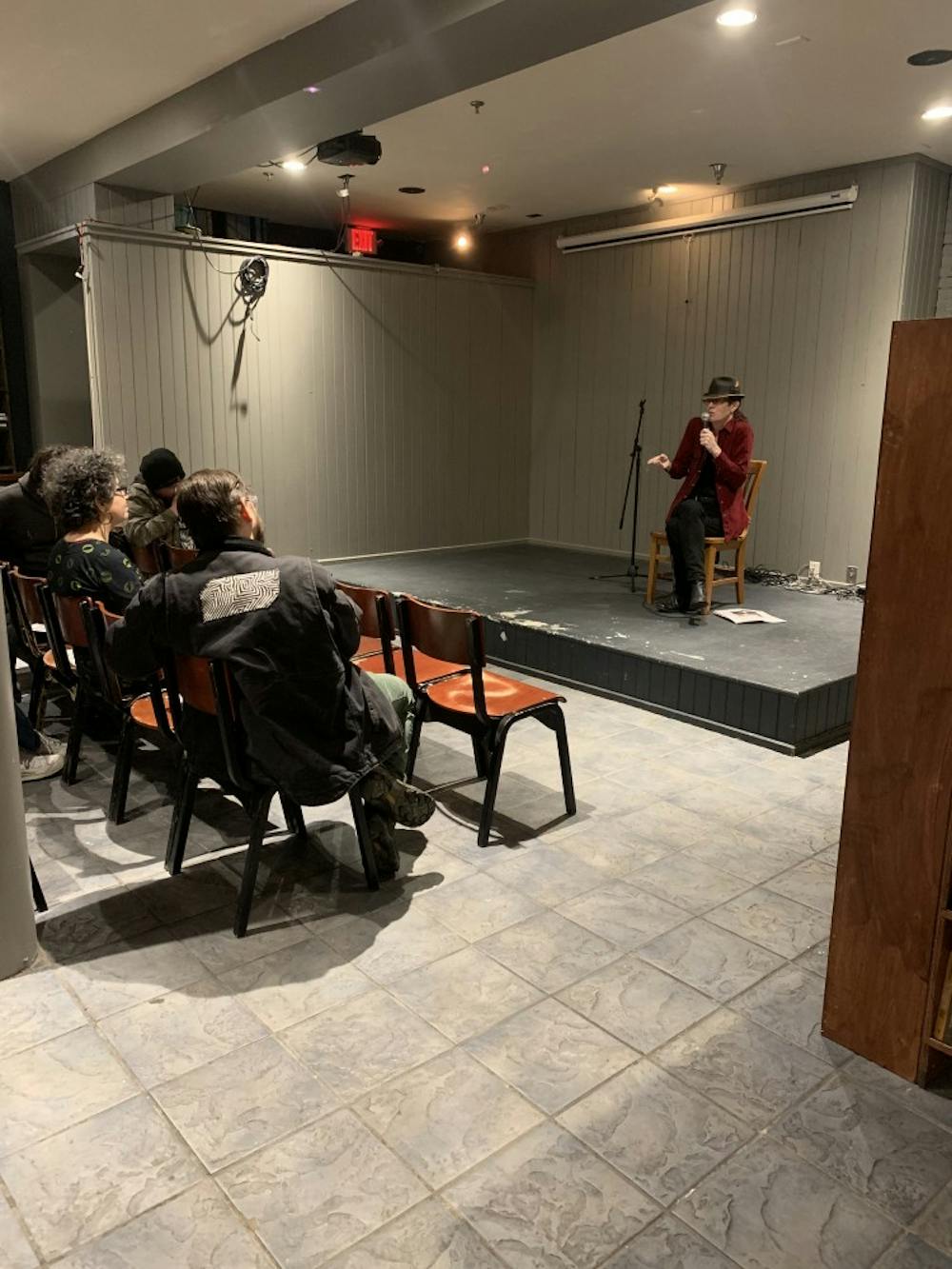Writer L.A. Kauffman gave a talk on her new book, How to Read a Protest: The Art of Organizing and Resistance, at Red Emma’s on Wednesday. Kauffman, who has worked in grassroots activism for more than 35 years, details the history of mass demonstration in the U.S in her book.
Kauffman spoke specifically about the Women’s March, which first took place on Jan. 21, 2017 in response to U.S. President Donald Trump’s inauguration. Since then the nationwide protest has taken place every year. Its organizers aimed to harness the political power of diverse women and their communities to create transformative social change.
“The Women’s Marches did not advance policies around women’s rights under the Trump administration — that was not really a thing that was possible to do,” Kauffman said. “But they did give people that sense of hope and empowerment and possibility that enabled many... to keep going.”
However, she noted that for some, the desire to demonstrate was short-lived.
“Of the five million that marched, you know there’s not even one million that are going to keep taking action,” Kauffman said.
Kauffman used the analogy of pressure points to explain why some movements are effective and some are not. Grand and popular marches are unable to exert meaningful pressure on legislators. However, they do work to bring people together and build the movement.
Because of this, Kauffman believes that we should expand our definition of what an effective movement is.
“If you go into [a protest] thinking you can have one protest to change the administration policy overnight, you’re going to be disappointed and not show up for the second one,” she said. “If you go into it realizing that a policy of this nature was put in place over time and it’s gonna take time to undo, you have a different framework for the fight. Go into it thinking: This isn’t a protest, it’s a campaign.”
Associate Professor Drew Daniel attended the talk and has also participated in the Women’s March. He commented on the interrelation of protests across time and how Kauffman connected seemingly disparate movements during her talk.
“I was really moved to hear Kauffman bring together the 1963 March on Washington with the Women’s March and to hear her stories of the tensions within a protest movement as it figures out its protocols and its strategies,” Daniel said.
He added that the talk gave him a newfound appreciation of the scale of the Women’s March.
“I feel like I learned something about the scale of protest in my own lifetime because I took part in the Women’s March, but I had no idea it was as large historically as Kauffman showed,” he said.
Photini Sinnis, a professor of Molecular Microbiology and Immunology at the Bloomberg School of Public Health, attended the talk. She found Kauffman’s approach to protests refreshing.
“I think Leslie framed things in a way that I haven’t thought about before,” Sinnis said. “Just starting off with the idea that movements or protests can fail, and that’s okay. Because there is this dominant narrative now that protests don’t do any good... sort of comparing it to restaurants that fail. But that doesn’t mean that we give up on restaurants.”
Miles Logan, a student studying social work at University of Maryland, Baltimore, commented on the power of collective activism.
“It may seem like we don’t have any power as individuals, but it’s surprising how much power we do have,” Logan said.
Logan also enjoyed Kauffman’s description of specific protest strategies.
“Learning these strategies, it’s interesting to challenge that and change and break the status quo for others,” Logan said. “It was definitely interesting to hear how important strategy was and... taking advantage of certain events that happen in society to advocate for the things that you believe in.





